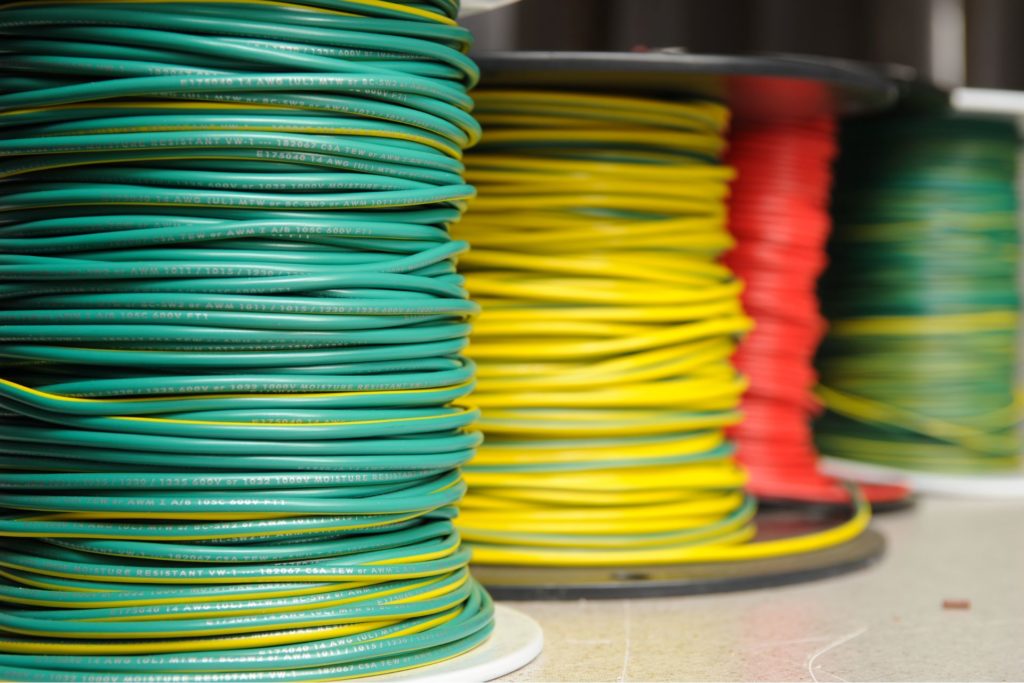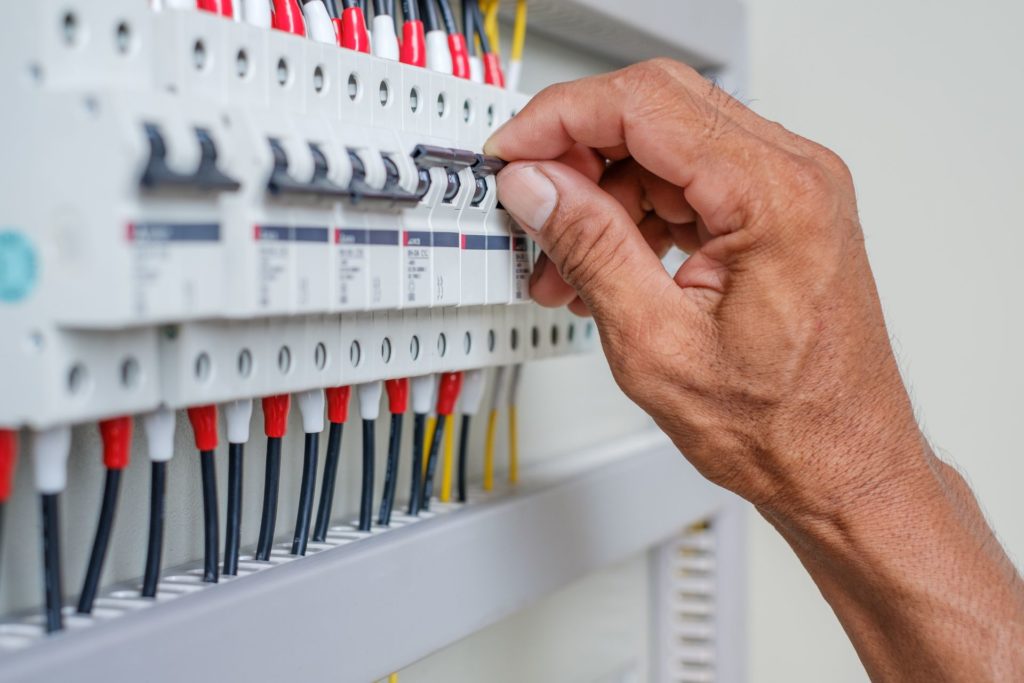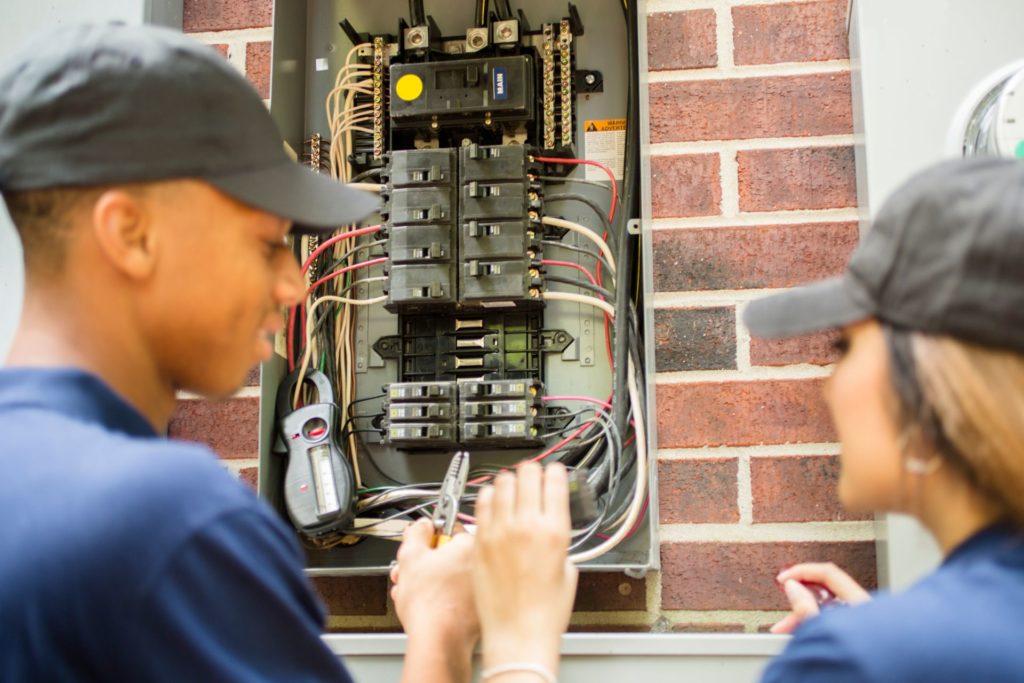If you’re trying to wire your home, you probably know the gauge you need. If you don’t know the gauge, the retailer will ask you to specify the wire size before they can help you. But again, if you know the wire size, you can just tell them. But what if you have multiple wire sizes in mind? Do you have to choose one?
Can You Use Two Different Gauge Wires On Same Circuit?
You can use different gauge wires on the same circuit but the breaker should match the smallest wire. For instance, if you have 12AWG and 14AWG wires, get a breaker that protects 14AWG, not 12AWG. 14AWG is smaller than 12AWG. If you have a 20A breaker, it will only trip when 12AWG overloads, which sounds like a good thing.
However, you can’t trust the 20A breaker to protect the 14AWG. The breaker will allow the 14-gauge conductors to overheat because the device responds to currents that exceed 20 amps. On the other hand, you can overload 14-gauge lines with 16 or more amps.
Therefore, the only way to experiment with this practice without burning your house down is to prioritize the smallest wire. If you match the breaker size to the thicker wire, the thin conductors will overheat and melt.
Many people will answer this question with a resounding no, especially laypeople. They know the wire gauge is important because it prevents fires, and they have learned to associate specific gauges with particular amp ratings.
Therefore, the notion of using different gauges on the same circuit doesn’t make sense to them. But are they correct? Not necessarily. If you consult professional electricians, they may surprise you by providing contradicting answers.
Some of them will shut this idea down. Others will encourage you to experiment with different wire gauges on the same circuit. They may even argue the merits of this practice by explaining the benefits of mixing different wire gauges.
Therefore, rather than listening to other people, you should analyze the evidence surrounding this issue before reaching a conclusion that satisfies you. Keep the following in mind:
1). Avoid Overloading By Selecting Correct Gauge
In your efforts to determine whether or not mixing different gauges makes sense, you have to start by understanding the importance of a gauge. The gauge reveals the wire size.

You have to determine the wire size before performing electrical installations because the wire size shows the amount of electricity the conductors can carry.
For instance, are you trying to wire your kitchen? How many appliances do you have? The gauge will tell you whether or not your cable of choice can support the demands of the kitchen without overloading.
If you force the wire to carry excess current, it will overheat. This is your biggest concern. You have to avoid overloading at all costs by selecting the correct gauge.
2). Wire Size And Breaker Go Hand In Hand
Every time someone asks whether they can use different gauges on the same circuit, they are technically trying to determine the viability of attaching different gauges to the same breaker.
The answer to this question is vital because the breaker protects the wires.

For instance, 14AWG can accommodate 15 amps. Therefore, you should pair 14AWG conductors with 15A breakers.
The breaker will permit the current to flow if it stays below 15 amps. When a current exceeds 15A, the breaker will trip and cut the power, preventing the wires from overheating.
People expect the breaker to protect their appliances, but it actually defends the wires. If the wires overheat, you may lose everything, not just your property but the inhabitants of your home.
In other words, your choice of a wire and breaker size is critical. It could mean the difference between life and death. This is why some contractors oppose the idea of using different gauges on the same circuit.
You may add a small wire size that doesn’t match the breaker size. Licensed contractors can make these decisions. They can find two different gauges that can co-exist on the same breaker. Laypeople do not have that wisdom.
3). Higher The Distance Smaller The Gauge
Have you given the distance any thought? Some people do not expect the distance to influence a homeowner’s decision to mix multiple gauges. But unfortunately, distance matters.
It affects the amp rating. When you increase the distance, the conductor’s gauge should also increase. Cables have the same ampacity regardless of the length.
However, longer conductors have higher resistance which, in turn, translates into more heat.
A 14AWG wire that can operate optimally over 50 feet will overheat if it has to cross 200 feet because the resistance has increased significantly.
You can overcome the risks by increasing the gauge. But this creates a problem. If you have different gauges on the same circuit, you cannot trust them to perform reliably and predictably if the lengths vary.
Homeowners must consider the individual needs of each wire to prevent overheating and disadvantageous voltage drops. While it can be done, the task is an inconvenience.
What Happens If You mix Different Gauge Wire?

Consumers use different wire sizes when they upsize a significant portion of the run to lower the voltage drop. But then they reduce the wire size later on because of termination limitations.
Admittedly, some people don’t put much thought into this decision. Some homeowners have used different gauges because that is all they have on hand.
For instance, if your home’s circuit has 14AWG, but you want to wire the basement and 12AWG is all you can find, you may use those 12-gauge conductors because it is cheaper and easier than walking to a retailer to buy new 14AWG conductors.
You wouldn’t take this route if you had a choice. After all, 12AWG is more expensive than 14AWG. The lines are also more challenging to handle because of their thickness. Homeowners don’t want to waste money on 12AWG when 14AWG can work.
Even if the money doesn’t concern you, the potential confusion will give you pause. Think about it for a second. 15A circuits go hand in hand with 14AWG. You can’t wire a 20A circuit with 14-gauge lines. The conductors will overheat.
But if you have 14AWG and 12AWG on a 15A circuit, what do you expect contractors to conclude? If you hire an electrician to perform repairs on your 15A circuit, the presence of 12-gauge wires may trick them into believing that your house has a 20A circuit.
They may also upgrade a 15A circuit to 20A because they think the wires can handle it. But if that happens, the 14-gauge lines will overheat, starting a fire.
Some people argue that professional contractors are too competent to make such mistakes. They can’t use the gauge to determine the breaker size. But electricians are human beings. They are prone to errors.
If a contractor makes the wrong assumptions, they could inadvertently burn your property to the ground.
What Should Be Considered While Using Different Gauge Wire?
No one will blame you for mixing gauges. The practice has its benefits. For instance, you start with a larger wire but then downsize once you reach a place where the higher gauge is unnecessary.
But the practice attracts so many complications that you’re better off avoiding it. If you’re determined to mix gauges, the most important factor is the breaker.
Get a breaker that accommodates the smallest wire.
You want the breaker to trip when the current overwhelms the lowest gauge. If the breaker can only respond to the thick wire, the thin wire will overheat and melt before the thick wire overloads.
Don’t forget about the distance. You need thicker wires to cover long distances. In fact, extended distances may compel you to buy different gauges. You can install a large wire size for significant distances while the thinner cables accommodate the applications nearby.
But you can achieve similar results with one gauge. Multiple gauges are difficult to justify.
What Different Gauge Wire Should Not Be Used?
The gauge doesn’t matter. You can mix any wire sizes you want. However, the breaker should accommodate the smallest wire. The last thing you want is for the breaker to trip in response to the thick wire.
The thick wire can transmit more current than the thin line. Therefore, the thin line will melt long before the thick wire overloads. You can only trust the breaker to protect you when the breaker size matches the smallest wire.
What Does The Code Say About It?
The NEC doesn’t have anything to say about this practice. Clearly, they don’t care whether you use multiple gauges or stick to one wire size. The local authorities are a different matter. You should consult them before taking action.
If they have prohibited homeowners from using different gauges on the same circuit, you don’t have a choice. You must obey.
Can You Mix 14 Gauge and 12 Gauge Wire On Same Circuit?
You can mix 14AWG and 12AWG but you need a 15A breaker 14AWG and 12AWG can withstand 15 amps. A 20A circuit is a different matter. 14-gauge lines cannot carry 20 amps of current without overheating.
Therefore, I discourage you from placing 14AWG and 12AWG conductors on a 20A circuit. You will start a fire.
Can You Mix 12 Gauge and 10 Gauge Wire?
You can mix 12AWG and 10AWG but you need a 20A circuit. 10AWG can withstand 30 amps. But if you place both wires on a 30A circuit, the current will overload the 12-gauge line. The 10AWG wires will survive. However, a fire can still start because the 12AWG wires have overheated.
Get a 20A breaker that can look after the 12AWG cables. It will shut the power off once you overwhelm the 12-gauge conductors.

